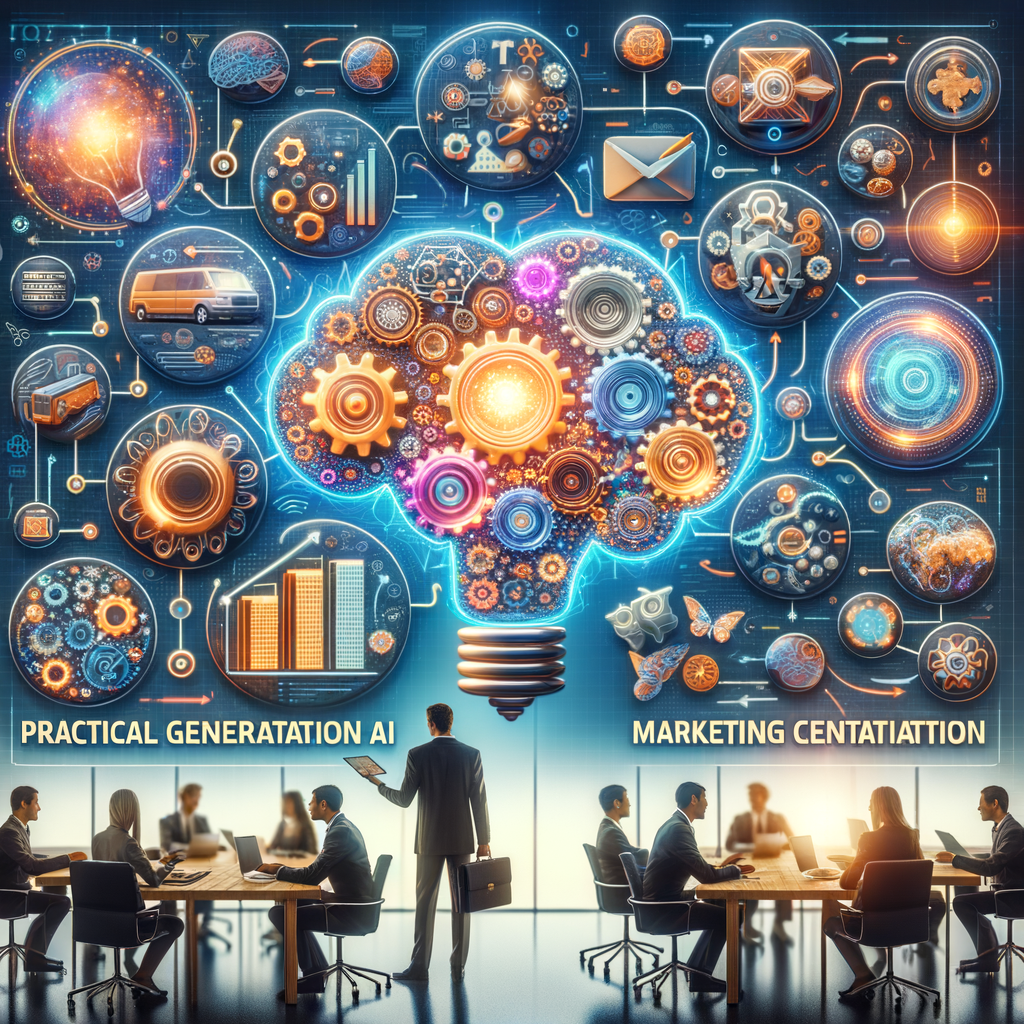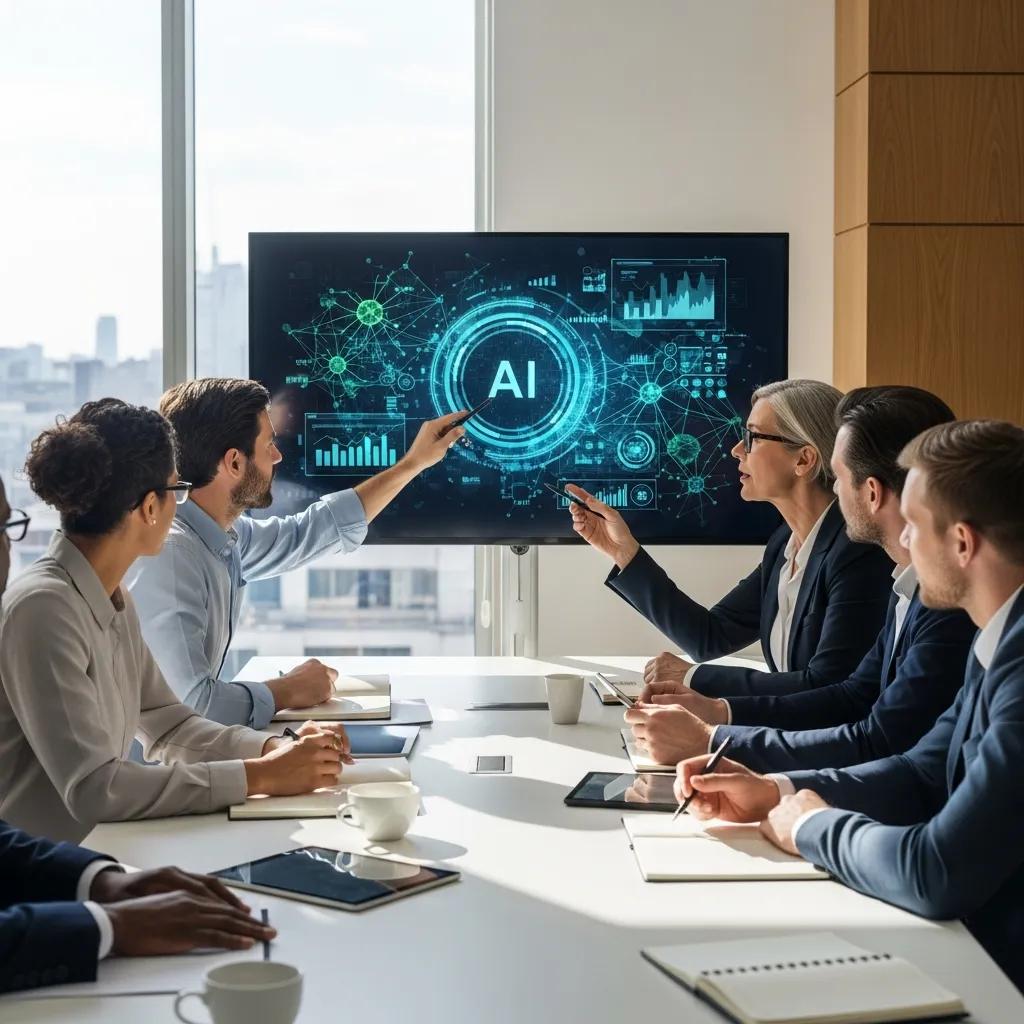Generative AI business use cases are buzzing. It’s hard to separate hype from reality, especially for small and mid-sized businesses. This exploration offers practical applications, benefits, and real-world examples of generative AI. We’ll cover its impact on areas like customer service and product development.
GenAI Use Cases: Transforming Businesses
Generative AI is more than a chatbot. It’s a set of technologies with numerous applications that can improve employee well-being, productivity, and work-life balance. Let’s explore how generative AI tools are actively used in several fields.
Revolutionizing Customer Interaction and Support
AI-powered chatbots can handle customer questions 24/7. These aren’t basic bots; generative AI chatbots provide human-like responses. They learn patterns from vast amounts of data.
They quickly answer FAQs, troubleshoot simple issues, and even personalize customer experience. Gartner predicts that by 2026, half of customer care organizations will use virtual assistants.
Elevating Content Creation and Marketing
Imagine faster email, blog post, or social media updates. Generative AI for marketing can achieve this. It’s already producing 25% of all digital content.
These AI tools also personalize marketing materials and streamline the creation process for targeted campaigns. This empowers marketers to better engage their audiences.
Boosting Sales and Market Analysis
Generative AI transforms market research. GenAI in businesses analyzes huge datasets, uncovering hidden patterns and market analysis trends. It provides sentiment analysis, helping gauge customer opinions.
It also generates competitive landscapes. This empowers you to make data-driven decisions with accurate market insights.
Streamlining Product Development and Recommendation Engines
Generative AI aids product development. It analyzes customer preferences, creates product recommendation engines, and improves product recommendations, accelerating the product development lifecycle. Imagine producing viable prototypes in days instead of weeks.
GenAI helps streamline initial product research. It generates synthetic data, mimicking real customer data while protecting consumer privacy. Product recommendation engines, fueled by natural language processing, enhance product discovery.
Nearly half of all organizations will use generative AI in R&D by 2025. AI-generated synthetic data helps ensure privacy while creating realistic simulations. This supports data-driven product creation based on market trends and customer preferences.
Real-World Examples of Generative AI Business Use Cases
Let’s examine successful implementations of generative AI for business operations.
Bolt: AI-Powered Customer Service
European delivery company Bolt uses a generative AI chatbot for customer complaints. This significantly reduced customer support costs. Forrester, an IT analyst firm, supports this approach.
It lists generative AI for language and AI agents as two of its top 10 emerging technologies for 2024. Early adoption of these technologies can lead to long-term benefits in cost reduction and operational efficiency.
Deutsche Telekom: Enhanced Customer Interaction
Deutsche Telekom integrated generative AI into its customer service workflows. This enhanced its AI assistant, Frag Magenta. The assistant now handles around 38 million yearly customer interactions.
This highlights the advantages of using conversational AI. Improved accuracy, faster processing, and cost savings are achievable within existing infrastructure. Integrating new AI technologies into daily workflows provides significant benefits for established companies.
Overcoming Barriers to Generative AI Adoption
While generative AI solutions yield great results for some, others hesitate. Barriers to adoption exist, from security and budget constraints to the ethical considerations surrounding artificial intelligence. Many business executives express concern about these implications when integrating AI solutions.
Change brings hesitancy. Integrating AI doesn’t require a complete overhaul. Natural language processing (NLP) solutions have limitations in real-world workflows. Budget restrictions, privacy considerations, and emerging data laws can affect implementation times and consumer behaviors.
FAQs about Generative AI Business Use Cases
What are some valid business use cases for generative AI?
Valid uses include content creation, customer service chatbots, personalized marketing, market analysis, sentiment analysis, product development, and risk assessment. These ai applications help organizations enhance customer experience and boost productivity.
How is generative AI used in business?
Businesses leverage generative AI to automate tasks, gather customer insights, improve efficiency, predict drug interactions, personalize customer support, assist in drug discovery, manage inventory, and develop innovative AI solutions. These AI capabilities provide various business benefits.
How to find use cases for generative AI?
Start by identifying challenges in areas like customer service, marketing, or product development. Research how generative AI tools and AI models can address these specific needs. Evaluate the AI capabilities to find the right fit for your work activities.
What is the business case for Gen AI?
GenAI offers numerous advantages, such as increased efficiency, productivity, and innovation. Consider ethical implications, security, and budgetary constraints before adoption. The ability to analyze customer feedback, understand emerging trends, generate text for marketing, analyze customer sentiment, model complex systems, and accelerate drug discovery provides a strong business case.
Summarizing the Key Takeaways
Generative AI business use cases are changing the way companies operate. Small to mid-sized businesses can strategically apply these technologies to improve operations, and free up employee time for more complex, higher-skilled tasks that need the “human” touch. This benefits both the bottom line and worker satisfaction. Evaluate the ethical, security, and budgetary implications before implementation. While generative AI offers powerful applications, it’s essential to consider its limitations within different business process scenarios.






